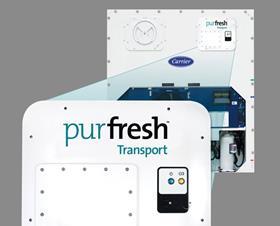
A study conducted by the US-based National Food Lab in partnership with food and water purification and preservation specialist Purfresh has helped to demonstrate the effectiveness of ozone as a tool to help boost food safety during shipping.
According to the research, the controlled supplementation of ozone, an active form of oxygen, into transportation containers was able to kill and control the spread of foodborne pathogens such as salmonella by 99.997 per cent, Listeria by 99.999 per cent and E.coli by 99.9 per cent.
The results were taken from both actual fruit and container surface coupons, and represented the efficiency of using ozone during transport to reduce risks, Purfresh said.
'Countless studies have proven ozone controls bacteria, moulds, yeast, viruses and ethylene,' said Dee Graham, president of R and D Enterprises. 'I believe this study was unique because it showed that ozone is also highly effective at killing harmful bacteria in conditions similar to those found in refrigerated shipping containers.'
Purfresh looks to address the issue of harmful microorganisms that can develop during transit with its Purfresh Transport solution, an active cargo protection system that is scientifically engineered to use ozone to control ripening, reduce decay and enhance food safety.
'Given the continued expansion of the global food market and the ever-increasing reports of food related illnesses, it is exciting and encouraging to see innovative companies like Purfresh applying sound science and commercially viable solutions to this important industry challenge,” said Paul Hall, president of AIV Microbiology and Food Safety Consultants. 'And I believe they really hit a home run with their transport solution by providing a way to enhance food safety as well as maintain the quality and value of fresh produce being shipped around the world without the dependency of many harsh, traditional chemicals that are rapidly falling out of favour in the world's markets.'



